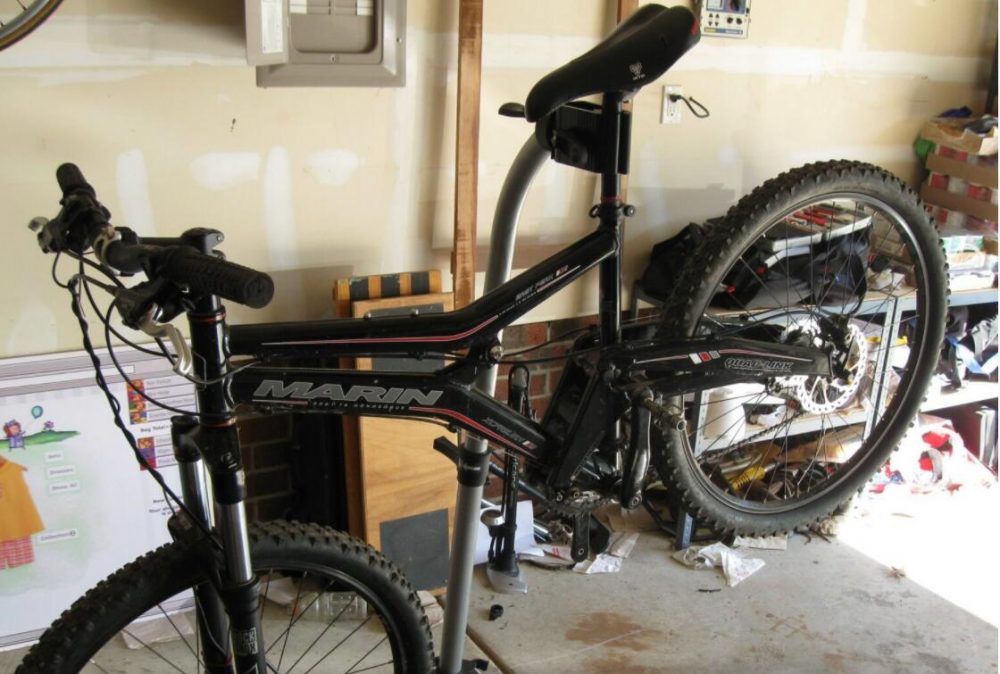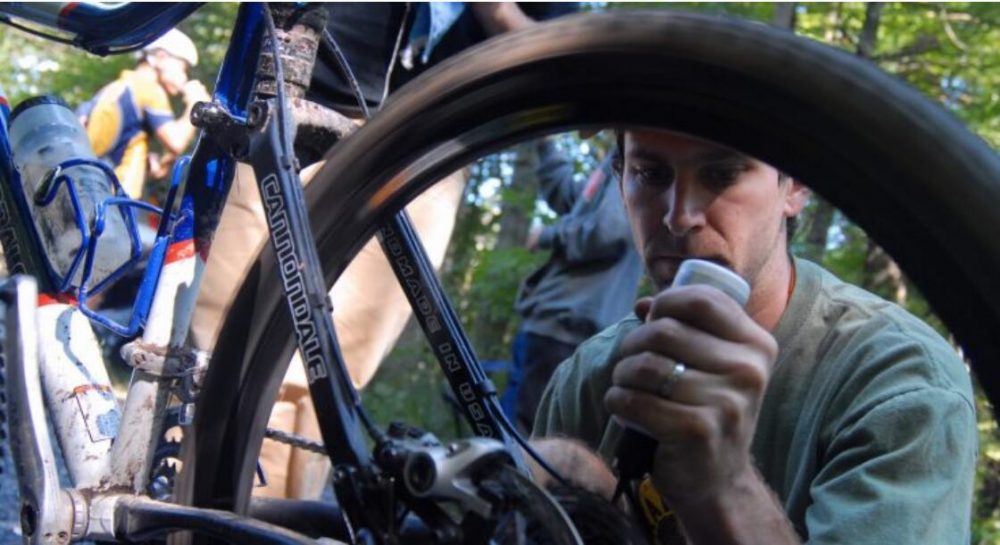One of the most common sources of concern for bike owners is a flat tire. This is especially true if you own an electric bike or e-bike.
Electric bikes, unfortunately, tend to get more flats than regular bicycles due to their weight and the faster speeds at which they move. Furthermore, the many e-bikes on the market have rear hub-driven motors, putting the majority of the bike’s weight on the back. As a result, the back wheel is pushed significantly lower to the ground than the front. That means flats in the rear wheel will become increasingly common.
Many individuals use e-bikes for everyday travel, so a flat disrupts their day and costs them precious time. The good news is an ounce of prevention goes a long way with e-bikes and tires. Learning ways to avoid flats can ease your stress and save you time in the long run.
What Exactly is a Flat Tire?
The name tells you everything you need to know. Like most quality tires, those on an e-bike consist of four sections:
Tire casing – The casing serves as the base for the tire tread. It is made up of several strands that are firmly woven together. TPI (threads per inch), or the number of threads contained in one inch of the tire casing, is the standard of measurement for casing quality.
Tire bead – The tire bead is the edge of the tire that fits into the rim. Beads are classified into two categories, commonly referred to as wire beads and folding beads. Wire beads are heavier and typically seen on lower-priced tires. Folding beads, which are frequently constructed of aramid fibers, are lightweight and often seen on performance tires. Aramid is a synthetic polymer that is extremely strong and long-lasting.
Puncture protection – Some high-performance tires, particularly road and hybrid tires, provide puncture protection. These “breaking belts,” as they’re known, contribute to increased durability. However, it is important to note not all bike tires have this layer.
Bike tire tread – The tread is the portion of the tire that makes contact with the ground. Some tread is engineered to roll in a direction to maximize economy, lifespan, speed, and traction. If the tire is directional, an arrow on the sidewall will point to the right tread direction the tire tread is designed to roll ahead.

In the center of the tire is the bike tube. Bike tires are what is visible on the wheel. However, the inner tube is concealed inside and is what keeps the air in the tire. A flat means that the tube has a puncture, but it may also indicate the tire has damage as well.
E-Bike Tires vs. Traditional Bike Tires
Of course, e-bike manufacturers know their products put more strain on tires and plan accordingly. There are some notable differences in e-bike tires, such as:
Thicker grooving for improved grip at high speeds
A stronger housing that can withstand the greater heat produced by quicker speeds.
The capacity to handle increased air pressures since extra weight and torque can cause additional tire compression. This will depend on the conditions and your PSI preferences.
Thicker tread for improved puncture resistance when traveling at fast speeds, leaping curbs, or avoiding potholes. Furthermore, changing punctured tubes on an e-bike takes longer and requires more tools than a standard bicycle, so you should avoid it.
Rubber compounds are designed for wear resistance because e-bikes are frequently ridden for longer distances than traditional models and subjected to stronger braking and accelerating forces.
A collection of attributes may improve dampening, comfort, and even motor longevity, particularly if positioned in the rear hub.
Even with the added features, tires on electric bikes can be vulnerable to flats unless you take some precautions.
What Should You Look For in a Quality E-Bike Tire
An excellent place to start is ensuring you have the best quality tires on your e-bike. The tires you choose significantly influence how your electric bicycle handles and rides, The various types of tires significantly impact speed, range, suspension, and maneuverability.
Tread
The first thing to consider when selecting the correct tire for your electric bicycle is the terrain you’ll be riding on, namely whether it’ll be on-road or off-road. Most individuals ride their e-bikes on hard surfaces such as asphalt or concrete. This riding necessitates a smoother tread designed for hard, flat ground. For this sort of riding, commuter-style tires are ideal.
Commuter tires offer flat, smooth tread patterns with enough all-weather tread to keep you safe on wet roads. Unfortunately, in contrast to commuter tires, super-narrow road tires can frequently be wholly slippery and aren’t ideal for wet situations due to their increased sliding potential. So instead, search for a good commuter tire with a blend of slick tread and water dispersion grooves.
Anyone who spends the bulk of their time riding off-road on conditions such as dirt, sand, and grass, on the other hand, will prefer a knobby tire with an aggressive tread for grasping the soil and getting maximum traction in less forgiving settings.
Tire Width
There is a reason traditional bikes often come with those ultra-thin tires—the smaller the contact area and the narrower the tire, the quicker and more efficient the ride. However, thin tires are rarely the right option for an electric bike because they are heavier. Instead, a wider tire will provide more cushion and function as an additional suspension for your bike.
Once you have the right tires in place, you need to take care of them to reduce the risk of flats.
Five Best Ways to Avoid Flat Tires on Your E-Bike
Avoiding flat tires on your e-bike is a better preventive strategy than mending a flat tire. Taking care of your e-bike tire extends its life. Consider tips that will help you avoid flat tires on your e-bike.
1. Tire Pressure is Your Best Friend
No matter what quality your tire, if the air pressure is low, it is at risk of a flat. One of the essential things individuals can do to prevent flat tires is to monitor tire pressure.
Many people like to run their tire pressures a little lower since it provides a more pleasant and soft ride. Low pressure lets the wheels absorb much of the impact on uneven terrain, rough and rocky roads, and other comparable impediments, allowing the rider to feel the bumps less.
However, because of the decreased tire pressure, more of the wheel’s surface comes into touch with the ground, making the tires more prone to flats. As a result, it is best to keep the tires inflated at the higher recommended pressure.
Pinch flats can occur as a result of low inflation. For example, when you hit a bump, your under-inflated tire compresses to the rim, resulting in two little holes that resemble a snake bite. Over-inflation, on the other hand, does not result in flat tires. However, it is possible in severe situations to blow out the tube.
Keep the tire inflated to a higher pressure to make it more resistant to flats. See your electric bike’s owner’s handbook or the tire manufacturer to determine the necessary pressure. It is also typically printed on the tire’s sidewall. If it lists a range, maintain your tires at the upper end of that range.
Tire pressure can be a specific problem for fat tires—unfortunately, the bigger the tire, the lower the air pressure. For instance, you might find the recommended pressure for a fat tire is around 65psi, whereas it would be as much as 120psi on thin ones. Low pressure leads to pinch flats.

Check your tire pressure with a tire pump or gauge. Higher-end tire pumps will come with a psi gauge, but you’ll need to bring your own if you have a lower-end pump.
2. Check the Tread Often
Like with a car, when the tread gets low, you need to replace the tire. Worn tread leads to cracks. Old thin rubber is easier to puncture, putting the bike tube at risk.
Also like on a car, the low tread is both a safety and efficiency issue. Your e-bike will use more electricity riding on worn tires, so you get less from each battery charge. Also, the wear might cause the tire to pop while you are on the bike, causing an accident.
3. Anti-Flat Tire Material
You can buy this product to heal a flat should you get a puncture. You can also use it as a preventive measure. Squeeze some sealant into the valve stem to coat the inside of the tube. In the event of a minor puncture or cut, the sealant immediately closes the hole and forms a plug that frequently outlasts the tube or tire that surrounds it. If you have a flat, fill the tube with the appropriate amount of sealant, re-inflate it, and proceed.
The sealant spreads out automatically inside the tube to coat the whole outside surface. Then, when (or if) something punctures the tire and tube, the sealant is driven into the hole and seals it, preventing further air from escaping.
Some tubes are “pre-filled” to help avoid flat tires. These are often thicker, thorn-resistant tubes that, when pre-injected with sealant, provide a tremendous flat-avoidance approach.
4. Use a Tire Liner
You can put a liner on your tire along those same lines to protect it. A tire liner is a thin plastic strip that inserts between the tire and the tube. This additional layer considerably lowers the possibility of flats being punctured by thorns, glass, or other sharp items.
Liners are popular and effective, but they add six ounces or more to the weight of your tires, which increases rolling resistance substantially in higher performance tires. On the other hand, liners may be well worth the weight if you live in a region with a lot of thorns or road debris.
Tire liners come in a variety of designs. There are very thin ones that are cheap and commonly accessible on the market. Then there are ultra heavy-duty tire liners, which are large foam inserts that need some effort to install.
Heavy-duty tire liners are far more protective than thin ones. It will, however, perhaps offer you a rougher sensation as you ride.
Another key part of having heavy-duty liners is maintaining proper tire pressure constantly. Liners are held in place by the tube’s pressure, which presses on the tire to keep it in place. If the tire pressure lowers, the tube will not press the liner as firmly against the tire as it should. As a result, the tire liner can squirm out of position, wrap around the tube, and cause flats. If you’re not cautious, the thing you bought to avoid flats might instead start causing flats. As a result, make sure that your tires are correctly inflated.
5. Ride Smart
In general, things that are most likely to damage tires like nails, glass, screws, or thorns end up on the side of the road. If you are tempted to ride on the side to get around traffic, you put your e-bike at risk of a flat. Instead, stick with the areas clear of debris.
If you are still unsure what tires you need for your e-bike, our experts at Shotebike can help. Check out our website today to find out more.www.zhsydz.com
 Shuangye ebike
Shuangye ebike
